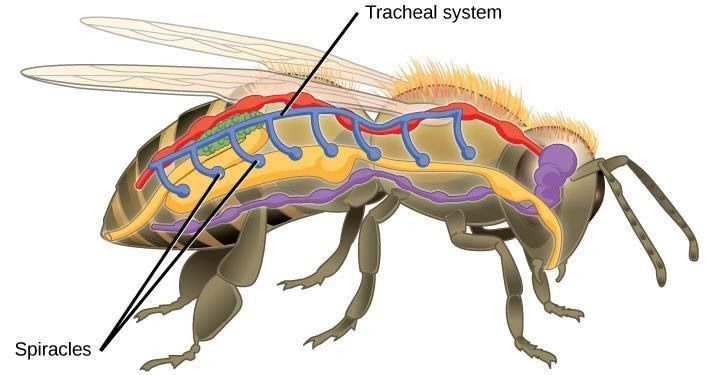Corporate Innovation Diffusion
Around the world many business leaders and successful CEOs aspire and direct their teams to think like a startup to bring in innovation and be successful. Can every team in the large enterprises and corporate organizations can become an innovation centric team and work like a startup team? There is no doubt that innovation is always an important element to craft a successful sustainable business.
However, there was always a dilemma in my mind about this approach of ‘thinking like a startup’ and its effects on corporate innovation. To seek answers for this question I started looking towards nature, where billions of years of R&D has been executed with many successes and failures. Primary difference between a startup and an enterprise is the scale and size of business operations. How does nature deal with this phenomena?
Nature’s Way: Size Does Matter
Staying alive is about doing things. This very second, your cells are combusting glucose molecules with oxygen to make energy available, which keeps you alive for another precious moment. To get the oxygen to your cells you are breathing. Breathing is an answer to a very hard problem: How do you get the resources that your cells need to survive, from the outside, to the inside of your cells? Every living thing has to solve this problem and the solution is surprisingly different depending on one of the most important regulators of life: Size.
At different scales, the physical laws of the universe have different consequences for its inhabitants. Simple things like temperature, microgravity or surface tension might not matter to you or be a deadly danger – depending on how big you are. Living things need a lot of different materials to keep themselves going. And they somehow need to transport them from the outside to the inside. This was a huge problem for the first things on the verge of being alive, because doing anything in our universe requires energy. And the first living beings on earth did not have the abundance of tools and techniques available that life has today after billions of years of evolution. So at the very beginning, life needed to find a way to get good stuff inside and bad stuff outside of itself without using energy.
Luckily, the very first forms of life were very, very small. Just like our early stage startups.
And because they were so small, they were able to use a free form of transport that was based on a physical law called diffusion. Diffusion is the rule of the universe that molecules, especially in liquids or gases, are constantly moving around in all directions.And because they move around and bump into each other and other molecules, they tend to spread. The great thing about diffusion is that life can use it for free, it doesn’t require energy. And life loves free things. So all life on earth relies on diffusion.

Let us look at the smallest living being on earth, a bacterium. Specifically its surfaces. Cell membranes allow for diffusion of certain molecules. This specific bacterium consumes oxygen to live, while carbon dioxide is produced inside, as a waste product. So inside the bacterium there isn’t a lot of oxygen, but a lot of carbon dioxide. Because of diffusion these molecules will eventually spread evenly, so the carbon dioxide diffuses out, while oxygen is constantly replenished from the outside. But this kind of “breathing” only works for the very small world. For bacteria, amoeba or your cells and a few very small animals. This is exactly how early stage startups work without any extra overheads, just concentrate on innovation by using limited resources around its ecosystem.

Insects for example have a fine network of trachea, tunnels with a pressure gradient, where air very slowly can diffuse in and exchange gases with the insect cells. But even insects seem to be able to contract their trachea and at least some even have specialized breathing organs like spiracles and air sacks. At certain scales diffusion is just too slow to keep cells alive. The fundamental problem is that the exchange with the environment can only happen at the surface and diffusion of materials can only sustain a certain amount of inside. Tiny living things have only a little bit of inside, or volume and a lot of outside, or surface area.
Bacterium the size of a Blue Whale
But what if we wanted to create a bacterium the size of a blue whale and had a very convenient enlargement machine? We would sadly be messed up by the square cube law.
In a nutshell it means that if you make something ten times larger, its outside, or surface, would grow by 100 but its insides, or volume grows by 1000 times. If we compare the bacterium Pseudomonas aeruginosa with a blue whale, we see that the bacterium has 10,000,000 times more surface in relation to its volume than the whale. The bacterium has a lot of outsides, while
the whale has a lot of insides. If we make a bacterium the size of a whale – our giant bacteria now has too much insides and most of its inside is now very far from its surface. The oxygen our bacterium needs would never reach the inside before it would run out of oxygen.
Our giant bacterium would just die. Still, being bigger has many upsides.
From being harder to be eaten to making it easier to eat others. But the size of cells is limited by the distance oxygen and nutrients can effectively diffuse to provide the inside with enough resources. This is what happens when startups think like corporations or vice versa.
Nature’s Solution for Complex Diffusion
So life avoided this problem by forming multicellular structures, beings composed of many cells instead of one. Because diffusion works better if you have many small units instead of one much bigger one. Over time the cell buddies began to share work and specialize. Some cells concentrated on sensing the environment, others on digestion, others on movement.
But that still wasn’t enough. The problem of diffusion and surface and energy production remained, limiting the size these first multicellular forms of life could attain. So in order to become even bigger – life solved the diffusion problem by having holes and caves and tunnels and by folding in on itself, so diffusion could happen easily in each one of the cells.
Take yourself as an example, what you consider your outside, your skin, has a surface area of about 2 square meters. But your lungs have a surface area of about 70 square meters. They aren’t like balloons, they’re more like sponges filled with many tightly packed tiny balloons, surrounded by blood vessels. When you breathe in, all these tiny balloons fill up with fresh air.
Blood filled up with CO2 is pumped around the balloons. And then the magic of diffusion happens. The oxygen diffuses into the blood where it is picked up by red blood cells. And the CO2 diffuses out of the blood and into your lungs, where it can be breathed out again.
Your blood then carries oxygen rich blood into the furthest corners of your body and picks up the CO2 waste. Diffusion in the body is effective at about one millimeter, so every cell in your body is at most one milimeter away from a blood vessel.
Innovation Analogies At last!
Like big corporations want to diffuse innovation, all parts of you also want to exchange something with the outside world. Your body needs surfaces to take in nutrients from your food, so your gut has the surface area of a half a badminton court, roughly 40 square meters.
Take a tree. Its way to stay alive is to create sugar out of thin air and sunlight. So it needs as much surface area as possible. An orange tree with two thousand leaves has a leaf surface area of 200 square meters. But the surface inside the leaves where diffusion actually occurs is 6000 square meters.

The same with roots, where water diffuses from the soil into countless tiny hairs that maximize the surface area. The roots of one square meter of grass add up to around 350 square meters of surface!
The larger you are, the more hidden surfaces you need. This is exactly how large corporations should design their innovation diffusion processes to be successful. Innovation engagement avenues and diffusion programs using open innovation platforms should be an imperative. Instead of thinking like startups, corporations should take cues from nature to have specialized teams for various functions, however structured avenues for innovation diffusion must be created.
Some basic principles are the same for everybody and have not changed significantly for billions of years, if we look at the very very small or the very very big: Waste goes out and fresh fuel comes in, exactly like innovation. Corporations similar to big animals just need a lot of complex plumbing to make it possible. Innovation is like fresh fuel which is something we can all use from time to time, especially for our creativity and sustainability.
We at T-Hub specialize in understanding these finer nuances of corporate innovation and craft strategies and programs to diffuse innovation from open ecosystems continuously. Feel free to write to us to discuss more about these interesting topics. If you have enjoyed reading this article you might like my previous work on biomimicry in the innovation ecosystem: Article 1 & Article 2.
— Abhinav Guptha, Lead – Fintech Vertical, T-Hub
We at T-Hub, power Corporate Innovation through high-impact partnerships and transform your business models for the better. Know more, https://bit.ly/31cBi71.






